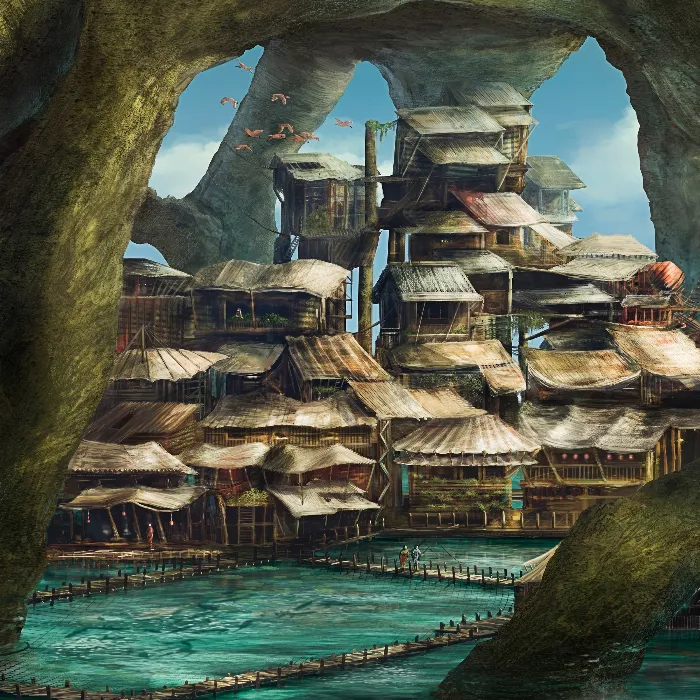Creating impressive digital landscapes requires not only creative skills but also a deep understanding of proportions. A simple way to clarify dimensions in your images is to use familiar elements like people or animals. These help the viewer quickly grasp the proportions and develop a sense of space. In this guide, you will learn how to apply these techniques effectively in your digital artworks.
Main insights
- Introducing elements with known sizes promotes the understanding of proportions.
- Whitespace, shadows, and light are important factors for the overall composition.
- The use of details, such as buildings and animals, enriches the story of an image.
Step-by-step guide
Step 1: Choosing and inserting a human element
Start by selecting an element that clarifies the proportions in your image. A person is an excellent choice to place in the scene. You can use an image of a "Stick Salesman" that you import into a new document. Make sure the chosen element is clearly visible and creates an interface with your landscape.
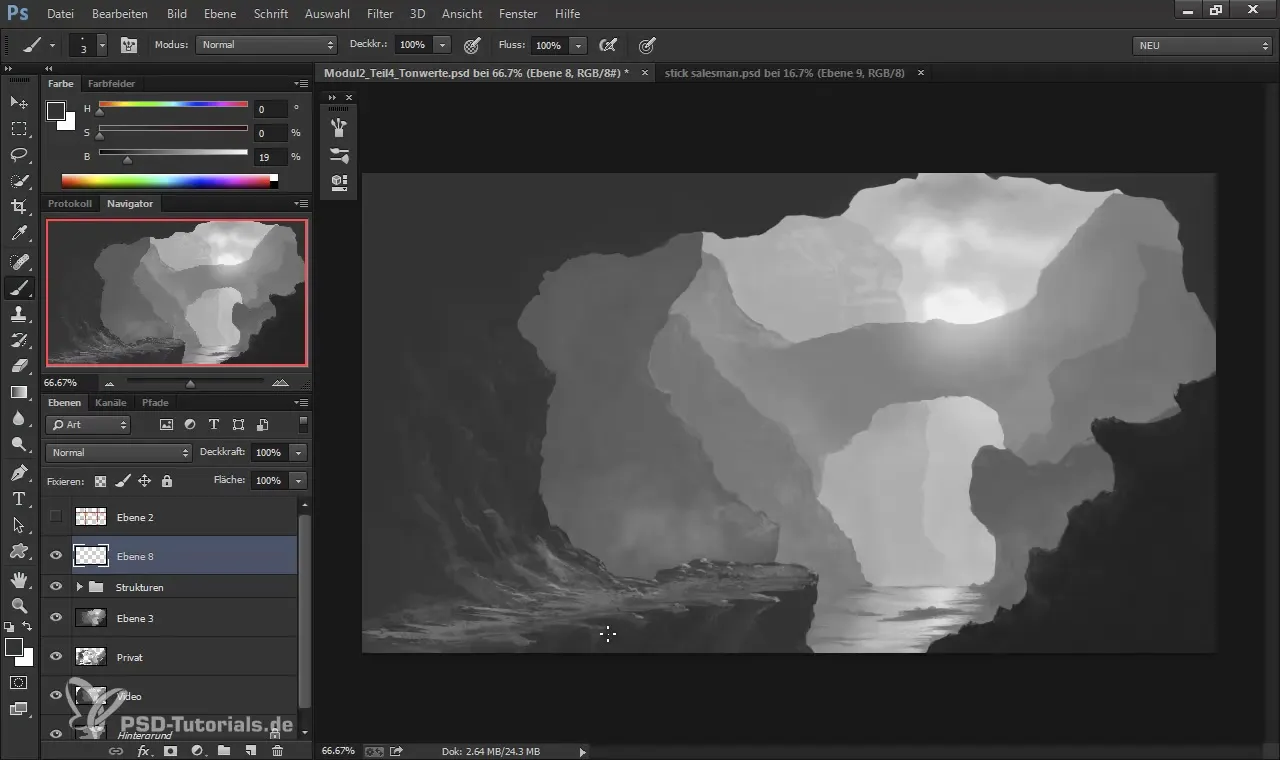
Step 2: Adjusting dimensions
An important aspect is the scaling of your human element. You need to ensure that the figure does not appear too small or too large, as this affects the perception of the entire image. Test different sizes by enlarging or reducing the figure, and check how the rock formations feel around it.
Step 3: Positioning and composition
Use the arrow keys to fine-tune the position of the figure so that it interacts harmoniously with the landscape. The position should be well balanced in relation to the center of the image as well as with other elements. Ensure that the figure does not appear too central or too hidden in order to create a cohesive overall image.
Step 4: Adding light and shadow
Once the figure is correctly positioned, add play with light and shadow to create more depth and volume. Use a detail brush with a lighter color to accentuate the contours of the figure. Make sure that the light source remains consistent and that shadows are created on a new layer.
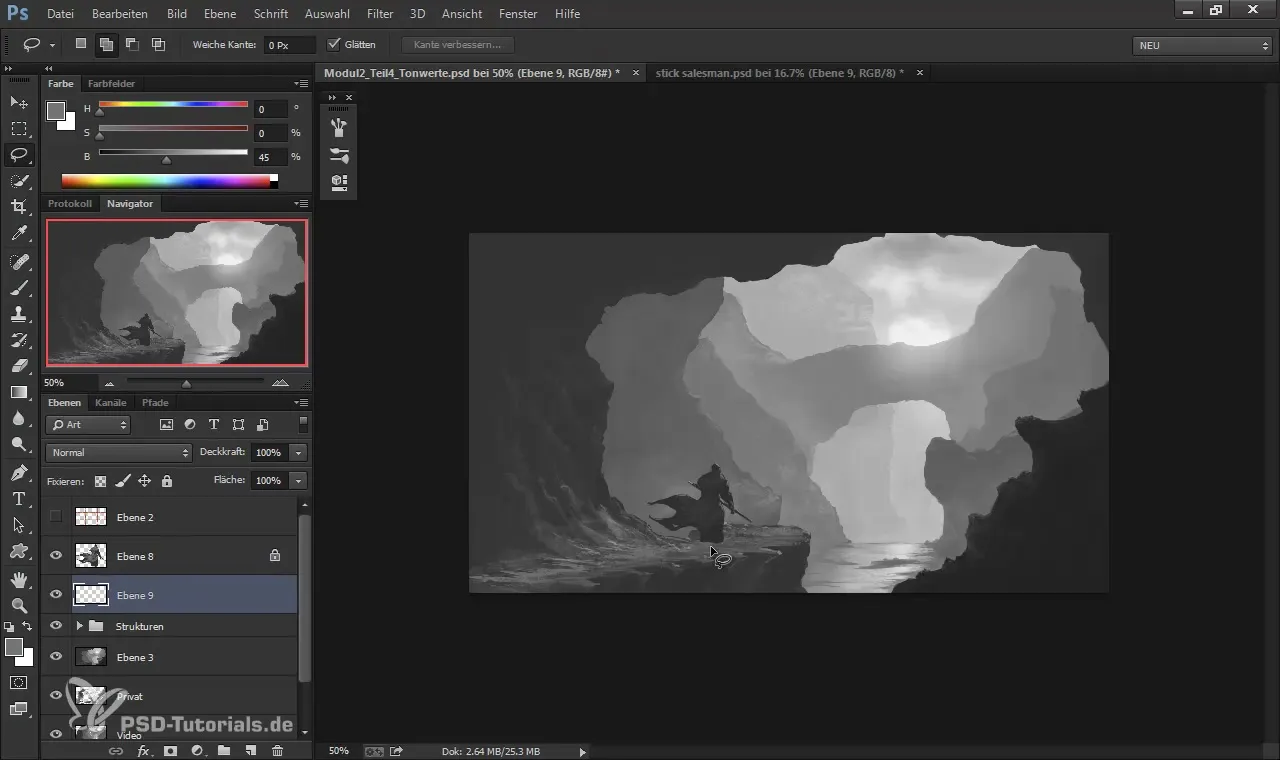
Step 5: Adding structure through buildings and additional elements
To further enliven the image and support the presence of your figure, you can add a building or other architectural elements. Start by using the ellipse and rectangle tool to create simple shapes that will form the basis of your architecture.
Step 6: Adding animal details
Animals, like birds, are an effective way to enhance the dynamics and liveliness of your artwork. Make sure to consider the rule of using darker colors for light backgrounds and lighter colors for dark backgrounds when drawing birds.
Step 7: Enhancing light moods
To intensify the overall mood of your image, work with a curve adjustment. By raising the light tones and lowering the dark tones, you can increase the contrast. Combine this with additional light effects, such as rays of light, to create emotions and moods in your image.
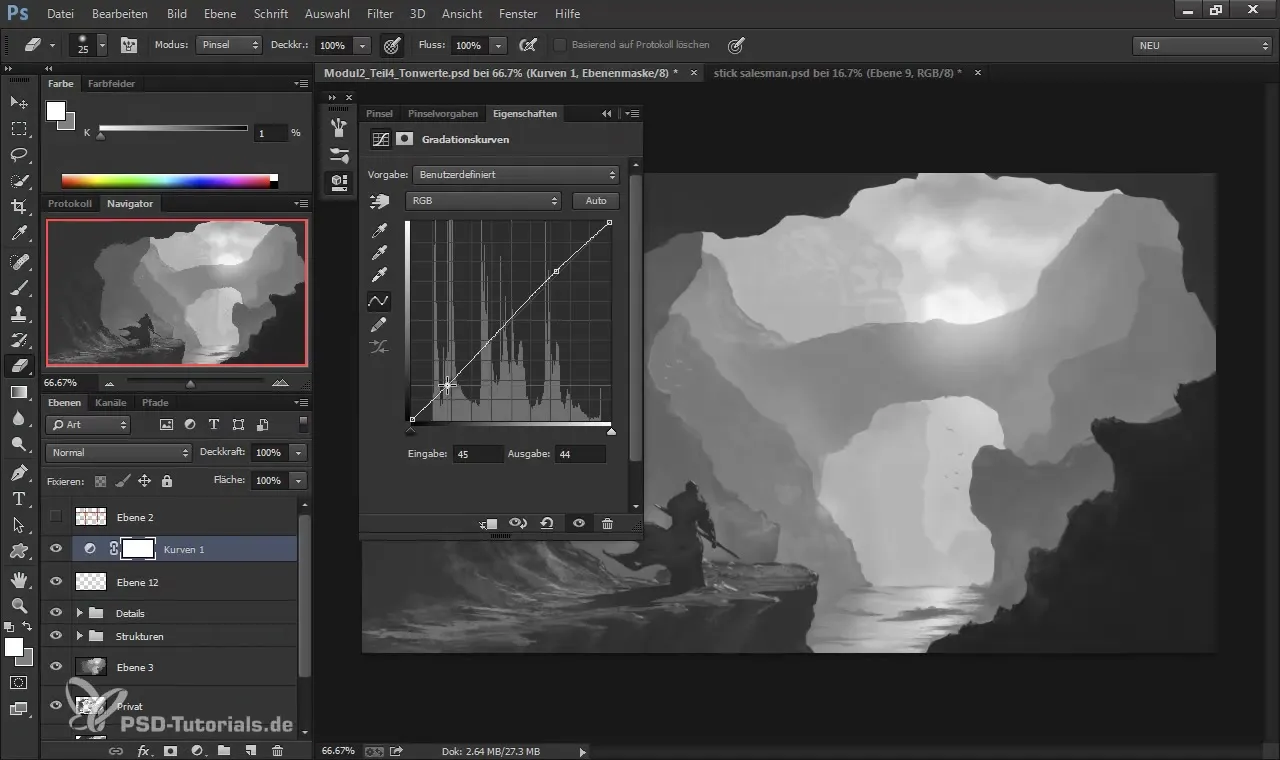
Step 8: Final finishing touches
As a final step, add additional refinements to polish the overall image. Experiment with different opacity levels and layer styles to harmonize all elements together. Toggle the visibility of the various layers to check how the individual details interact and where further optimizations are needed.
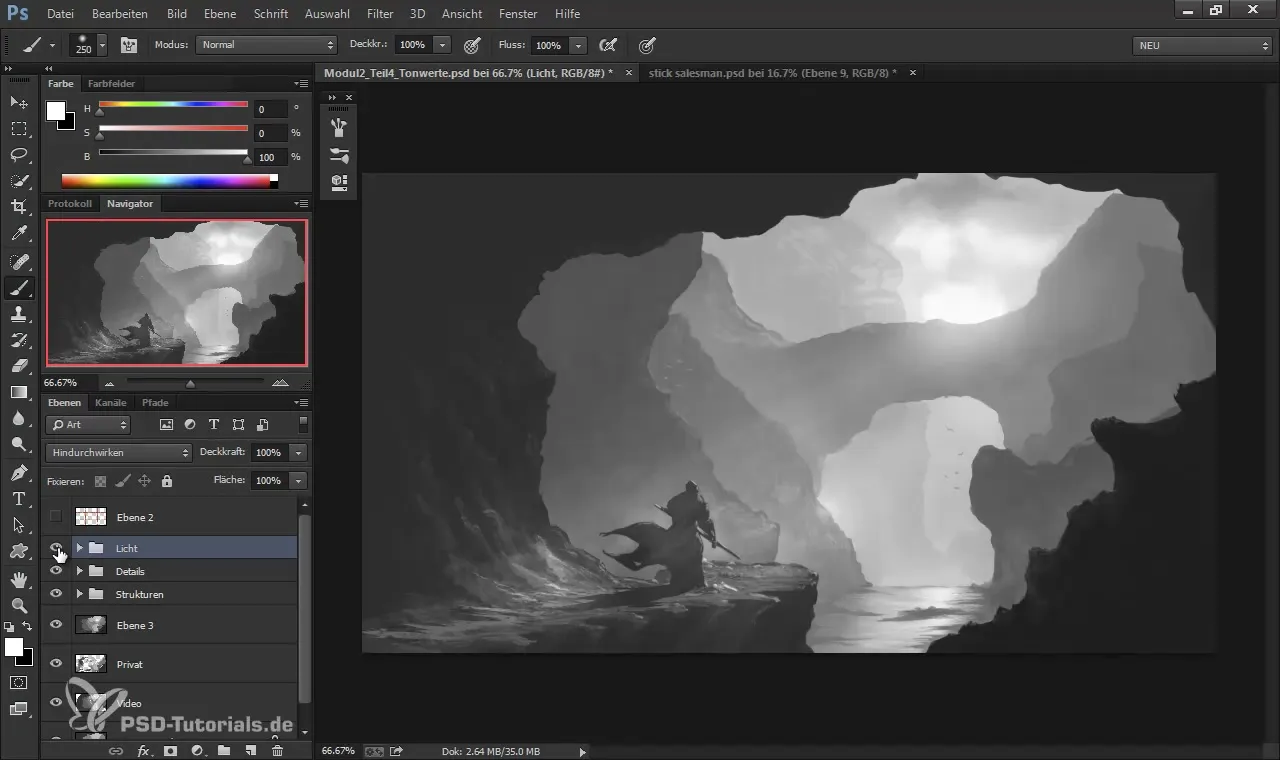
Summary – Defining proportions in Digital Painting and Matte Painting
Creating dimensions in digital landscapes requires a well-founded approach and knowledge of proportions, light, and details. This guide provides you with a structured approach to refine your skills in Digital Painting and Matte Painting. Whether you use a simple figure or complex architectural elements, the key lies in the interplay of all components.
Frequently asked questions
What is the purpose of human elements in landscape illustrations?Human elements help define proportions and provide the viewer with a reference point.
How can I effectively use light and shadow?By consistently considering the light source and working with light and dark colors, you can create depth.
How do I choose the right size for elements in my image?Test different sizes and pay attention to how they work in relation to other elements to create a harmonious overall image.
